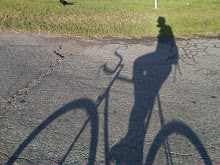Complete Streets policy has been spreading for some time now thanks largely in part to groups like the National Complete Streets Coalition and local advocacy groups like Missoula's own BWAM and MIST. For the uninitiated, complete streets is a concepts and policy goal of designing streets that are accessible to all populations. This means a de-emphasis on moving at high rates of speed and making infrastructure improvements that make safety for pedestrians and bicyclist more of a priority.
Check out this map of America showing where complete streets are taking affect. And for those interested, Transportation for America has an online petition that asks DOT head LaHood to emphasize pedestrian safety.
And now it appears that we have some evidence that complete streets design is actually helping to make our most abundant of public spaces safer. Transportation For America recently released a long worked on report, Dangerous By Design, that highlights street design failings and success.
Columbia, MO seems to be a shinning example of complete streets policy at work.
This from an article at KOMU.com by Josh Frydman:
In 2004, Columbia passed a complete streets ordinance, which specified how streets should be designed. This included five-foot sidewalks on all streets as well as bicycle accommodations on certain streets, and that sent a very clear signal that Columbia is serious about encouraging people to walk and bike in Columbia.
Columbia's Pedestrian Danger Index scored four times lower than the national average. Columbia reported just two pedestrian fatalities from 2007 to 2008, and just 3.8% of the total traffic deaths during that time were pedestrians.
This is just a portion of the rethinking of street design that is slowly sweeping across our country. After more than half a century of placing almost all our efforts into moving more cars and seeing this strategy fail over and over change is finally snowballing. Bike paths/lanes, mass rapid transit, sidewalks, green streets, and the redesigning of intersections are the new fashionable strategies in many cities for dealing with transportation.
We are even importing a few good ideas from the Europeans, GASP! Hans Monderman's design concept of shared space is replacing the idea of traffic control with controlled chaos. This can be seen in the growing number of roundabouts and uncontrolled intersections that force different modes of transportation to actually interact and be cautious towards one another.
Each roundabout or transportation plan that includes complete streets is only a small step, but a decade of small steps takes you far from your starting point.
15 hours ago





1 comment:
Great article you got here. I'd like to read more about that matter. Thanks for giving that data.
Sexy Lady
UK escort
Post a Comment